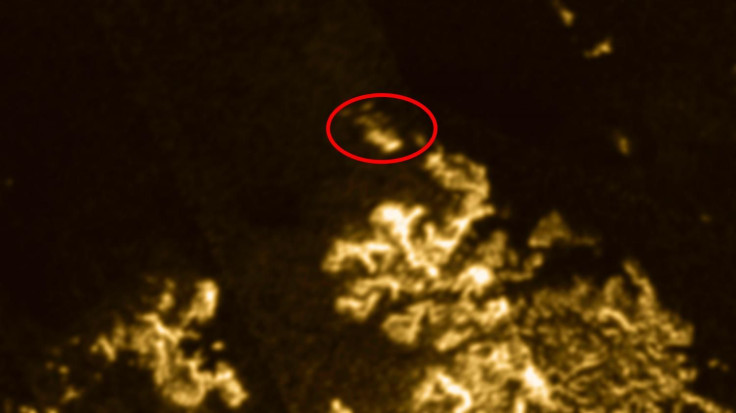'Magic Island' On Titan: New Object Appears In Second-Largest Sea Of Saturn's Moon In Cassini Photo

Astronomers are stumped over what appears to be a new island in Ligeia Mare, the second-largest sea on Saturn’s moon Titan. The object appears in new images from NASA’s Cassini spacecraft and could indicate geological changes on Saturn’s largest moon.
Cornell University astronomers discovered the object, dubbed the "magic island," in new radar images. The research was published in the journal Nature Geoscience. According to NASA, Ligeia Mare is the second largest ocean on Titan. The liquid is not water but hydrocarbons like ethane and methane. Researchers have been hoping to find evidence of movement in the ocean, such as waves, and the appearance of the mysterious island may be the first sign of movement in Ligeia Mare.

In March, astronomers announced they may have observed waves in Punga Mare. Titan is a moon full of lakes and rivers, with three bodies of liquid large enough to be considered seas. Kraken Mare is the largest with a diameter of 1,170 meters while Ligeia Mare has a diameter of 500 meters and Punga Mare has a diameter of 380 meters.
Lead author Jason Hofgartner said in a statement, "This discovery tells us that the liquids in Titan's northern hemisphere are not simply stagnant and unchanging, but rather that changes do occur." The island was discovered in Cassini images sent on July 19, 2013 and astronomers compared the surface features of Ligeia Mare with older photos.
As for what the mysterious island on Titan is, the astronomers have four possible explanations. The island could be a wave, with Cassini's cameras distorting the image, gas bubbles, a solid object that was previously underwater but floated to surface as Titan got warmer or a suspended solid. According to Hofgartner, understanding how wind, rain and the tide on Titan could lead to a better understanding of Earth's oceans.
© Copyright IBTimes 2025. All rights reserved.






















